Armor blast
Why on modern ships do not install armor?
No, I know, of course, that in some places something is protected by something — such as Kevlar defense of vertical launchers. But I mean reservation in the traditional sense of an entire century of armored shipbuilding, from the 50s of the 19th century to the 50s of the XXth century. Protection of the waterline, boiler rooms and engine rooms, artillery, military logging, chimney bases ... Zone belt armor, armor deck, towers, casemates, casings, glacis ...
Why do not book ships with a displacement of 7-10 thousand tons - this is the displacement of a modern large destroyer or a normal size cruiser? 100 years ago it was quite the average displacement of an armored cruiser - and they were given armor, which in some places had to keep hits from 6-, or even 8-inch projectiles! This is a very large kinetic energy, which means a penetrating force.
So why now do not put? At least against the usual 5-inch? Or - why not? - against cruise missiles?
I had a discussion on this topic on bwana after the year before last, by the Navy Day, I had posted a huge photo report on the Sea Salon in St. Petersburg. Let me, in the order of a rare deviation from the general order, give a link to this report; I remember, I did it (and three announcements to it on different resources) almost the whole day ...
Here you go; and there in the comments I was asked a simple question? Why don't ships book now? Like, what, the sword finally defeated the shield?
I answered: what is there! Five inches of armor - and "Harpoon" you are not afraid! However, they do not book.
And what, they ask me, maybe the armor will withstand an explosion of 165 kg of explosives, but the bulkheads inside the hull will be broken? Explosion - is it not more powerful than the kinetic energy of the projectile?
... I told this background with two goals. First, to preface the topic in general - in the sense where it came from. Secondly, in order to explain where the figure 165 kg came from, which appears at the very beginning of the article. She came from the question, and the questioner took it from the report, where I commemorate the English ships sunk by the Exocet cruise missiles in the Falklands War; 165 kg is the weight of the warhead of the Exocset.
I answered questions, of course, in bwana - it was 2011 a year! - and now I am going to simply transfer here these my response articles. For they have a completely independent meaning, and I spent a lot of work. The reviews were good; I hope you enjoy it.
And also - Mr. Observer, I think, will not deprive us of his attention, and from his comments we, including myself, will find out a lot of interesting things.
The answer to the above questions has decomposed into three topics. Today I give the first topic: discuss the explosion on the armor.
***
Let's talk now about today's realities. And they are such that most types of RCC in the world are subsonic. We will talk about them, especially since we have already taken the Exocset as an example. And they did not take it for nothing: it is one of the most widespread PKR in the world.
Pay attention: not 165 kg, but 50 kg are jerked on the armor. It is exactly the amount of explosives contained in the 165-kilogram warhead of the Exocset anti-ship missiles. This is about half of the weight of the explosives in the Soviet FAB-250 aerial bomb. For FAB-100, I did not find the corresponding digit; but we also need a qualitative assessment, and not a thorough calculation? Therefore, we first say that the explosive in Exoset is slightly larger than FAB-100, and then we neglect this “a little”.
And then you can go back to World War II and ask yourself: what will happen if the FAB-100 explodes, for example, on the armor belt of an American cruiser of the famous type “Cleveland”?
I chose Cleveland because their belt was just an 5-inch.
And nothing with a belt will not be. Under the belt the frames and stringers will be bent at a length of about ten meters; there will be water involved in the impact, which has experienced a mighty shock from the explosion. Can and punch a hole with a diameter of one and a half. Now, if it is “below the belt,” then the hole will be big, but we are not talking about that, we are discussing an explosion in the armor. Above the belt there will be slight damages, maybe the nearby air-carrying unit, a boat, will demolish; but nothing terrible will happen. Because the air strike and, THANKS TO THE ARMOR, the wave will go up, sweeping the deck only with a “side lobe of the radiation pattern”.
The worst thing is when FAB-100 strikes the side or deck; something like that, as we agreed, and the “Exochet”, which got into the aglitsky destroyer “Sheffield”, showed up. They could not save him, although they tried for a long time.
Let's check the kinetic energy.
The distance from which the Cleveland armor could keep hitting its own 6-inch projectile, according to calculations, was 47 cable, that is, 8,7 km. I don't know the weights of the Cleveland 6-inch cannon, let's take the Soviet B-38 of the same caliber. Her projectile weighs 55 kg and flies out of the barrel at a speed of 950 m / s. Assume that while flying on 8,7 km, 250 m / s will be lost; such a loss is even excessive if we consider that the B-38 shot at 30 km. That is, the projectile will arrive at a speed of 700 m / s, and its kinetic energy will be 13 475 000 kgm. Reluctance to count in joules, and to anything: we need a comparison, not an absolute value.
"Exochet" flies at a transonic speed; Take 300 m / s, although, in my opinion, this is a bit too much. We already know the mass of warheads, and I would not take the rest into account: the strength of a rocket is calculated to be sufficient for flight, and not for breaking through obstacles; warheads punches them. Therefore, there are no armor-piercing or high-explosive anti-ship missiles, but there are anti-shipbreakers with armor-piercing, high-explosive all sorts of other warheads. And, if the rocket meets not with the 19-millimeter board of “Sheffield”, but with some concrete or with Krupp armor, it will all be doubted and flattened, and the strike will be determined by the warhead.
So, 300 m / s and 165 kg give us energy 7 425 000 kgm. That is almost half the size of the 152-mm projectile.
Will not break. So, there will be an EXPLOSION ON THE WALL, and we have already said what it means for the ship.
Based on the foregoing, I confidently declare: if the Exochet got into 5-inch armor, Her Majesty the Sheffield ship would not even lose its combat capability. Although after the battle it, of course, would have to be repaired.
I will not find the source now, but I remember how the Americans rejoiced when in 1980-s they removed their battleships from conservation and put "Harpoons" and anti-ship "Tomahawks" on them! Because they had ships that themselves would sink someone, but no one at all. For, the Americans said, the battleship is invulnerable to missiles, and guns that could break it have been around for twenty years now like no one else.
And that's right. The four battleships, which survived to the 1980-x, was the last series of American battleships, in which the experience of the Second World War was already taken into account. Therefore, they defended themselves from aerial bombs. The system of their armor decks was designed to ensure that a 1500-kg bomb dropped from a height of 9 km (30 000 feet) would not penetrate vital centers.
I don’t remember exact numbers, but the order is this. I think a bomb dropped from 9 km is flying not much slower than Exochet. And 1500 kg, as you can easily see, is much more than 165 kg.
That is, the battleships were invulnerable from above.
Another thing is that invulnerability is understood here in a special way. Of course, if we dump half a hundred bombs on the deck exactly, the ship will not be well. There will be no fire control devices, anti-aircraft guns, the stroke will fall because of the broken pipes ... again, they are killing people ...
By the way, the kamikazes also got into the battleships, and this is a good analogy of a cruise missile. So what? They damaged 15 battleships, but not one of them was drowned. Here, look:
"January 6 The 1945 battleship (New Mexico, auth. Note) was damaged by a kamikaze, under repair until March 1945."
Quoted from the Encyclopedia of the ships www.warfleet.ru.
So, two months in repair. More precisely, less, because Well, it was necessary to reach the base.
And sunk the kamikaze 45 ships, mostly destroyers. That is, unbroken.
Well, that's enough. I summarize my assessment: an explosion on the armor of the anti-ship missile unit will give less damage than an 6-inch projectile that exploded where it is necessary INSIDE the ship. Not only where, but where necessary.
Don't forget the blast ON THE ARMOR! And then consider me an idiot ...
***
“Australia” in our picture is a heavy cruiser of interwar English construction. Not even a battleship. More precisely, four times less than the same "New Mexico" and with an armored deck of the entire 37 mm. And what could kamikazdze do with him? Uvaga: do not judge the roll through the pipes, they have the type of "Kent", which includes "Australia", bent back. So roll less than you might think, looking at the pipe. It is, in fact, almost none.
But that's not the point. Put a picture in order to show what an explosion OUTSIDE. If the same kamikaze had fallen steeply from above, he would have punched 37 millimeters, and then the cruiser would have had difficulty. After all, even the seediest kamikaze is, like, FAB-500 ...
***
In this second half of the article we will see a) what an attempt to book a modern ship will cost and b) why is it still so hard, this shipboard electronics, after all, the persona is so easy!
I believe you, since you say that you have just read the first half of the article. But if you do not speak, or speak, but did not read, then I persistently advise you to read. And in general, I advise you to start with the first article of this mini-series.
We started by wondering why ships are not booking today.
The question can be clarified as follows: why not start putting armor on ships? Today, after several decades have not been set; but, since it can save from anti-ship missiles ...
The final answer should be formed at the end of this mini-series, that is, after the next article, which I hope to make last. And now we look at why the reservation was refused then - during the years of the technical revolution on navywhen rocket ships went en masse weapon and its accompanying electronics. And not only his attendant.
I must say that the first victim of electronics was not armor. She was the speed.
In the middle of 1930, the French leader of the destroyers Le Terribl (he is in the first picture) set the world speed record for warships of the main classes - the 45,03 node. Italians also greatly appreciated this quality in all warships, our leader "Tashkent", built by them, developed to the 42,5 node. And about our own "Leningrad", also a leader, they write that its maximum was the 43 node.
The Americans were chasing less speed, first of all they needed a range, primarily for the Pacific Ocean. But their pre-war destroyers of the “Glivs” type (in the ranks of the 1940) developed 37,4 ties.
I can not, put "Glivs", although a direct relationship to the topic, he does not have. But what a handsome man, huh ?! I remembered him from childhood, when I, in the 8 class, from a classmate, the son of the admiral, got a “look at” book - translation of the Jane's fighting ships directory, edition of 1965 of the year. And - chipboard! Who does not know: the stamp "for official use". Then the Glivsy was still in service with the US Navy, it was the oldest type of destroyer that remained at that time in the US Navy formation.
By the way, to our discussion with the Observer in the comments to the “Friendly on the River”: the deck-guided torpedo tubes were not removed from it ...
The next type, “Fletcher” ... Let's put the “Fletcher” type too, it is also classically beautiful:
Fletcher was nothing, too: the 36,5 node. This is 1942, it’s already clear that the main struggle of the Americans is in the Pacific, the distance is needed like air ... Then they descended to 35 nodes and were going to gain a foothold there: 1950 hubs, aircraft carriers, though the destroyers could accompany them though would be in calm weather.
They wanted, but could not. Could not, despite the fact that in power plants there was significant progress. I will not describe the increase in steam parameters and so on, take my word for it.
Could not, because flooded anti-aircraft and anti-submarine missiles and related electronics.
And now the first special type of missile destroyer, “Charles F. Adams” (1960), has an 33 node (it has 1 PU-ZUR, 1 PU-anti-submarine). His successor in the Spruyens high-volume construction is the 32,5 node. The heir of "Spuyens", today's main type of "Orly Burke" (1988 g.) - 32 node.
The Spruences and Burkes are too well known, and I will put Adams on:
As you can see, the speeds have stabilized. Less can not, indeed no one will be accompanied by carrier strike connections.
My estimate. If a ship with a modern composition of weapons, say, with the same one as the Burke, try to book ... so, what type of booking are we talking about? Undefined; then we will reflect on the ideology of armor protection of the end of the Second World War. That is the time when it, protection, ended.
Serious booking is 20% displacement. The total displacement of the "Burks" is 8448 tons. 20% - 2100 tons. But add:
- an increase in the weight of the hull structures to provide the displacement gain necessary for the weight of the armor;
- increase the power of the power plant to maintain speed;
- increase in fuel reserves to maintain the cruising range;
And we get not 20%, and all 50. If not more.
And nobody will give it. Such surface ships, so that 13 thousand tonnes of displacement, except aircraft carriers and various landing options, have not been built for a long time. Long time ago, since they were afraid of nuclear weapons. They were frightened and decided that the combat potential should be dispersed. That large ships now do not need to build. Unless when it is otherwise impossible, as in the case of aircraft carriers and amphibious-staff ship-helicopter "Mistral".
Well, except perhaps for our giants of the type "Peter the Great". But “Peter” is a special article, it became so big because of a concept that was not born of a good life ... Let's not talk about Peter.
***
A few words about the fact that, sitting at a modern personal, it is difficult to imagine how this electronics can be heavy. And now - not about antennas and rooms, but directly about electronics. I saw a lot of it (and did it too) for my 30-year engineering life.
What is a personalka? The personal computer is an unreserved computer with a limited set of external devices, designed for room operation conditions.
Onboard electronics should be:
Reserved, this is the first. That is, we do not have one set of processor, power supply, etc., but three, four.
Vibration and shock resistant. This forces boards to be made with a thick metal frame, and blocks with thick walls, at least some. Put the PC on the stand, and it will crumble when vibrations, scatter when hit.
Can you imagine what requirements for shock resistance are imposed on the electronics of a ship, which not only waves, but also missiles with rockets will knock on board?
It also makes you give up on frivolous ways of installation, flat connectors - put the PC on the shaker, in 10 minutes the mother will crawl out of the slots. And in an hour it will come out for sure. And failures due to “flickering contact” will begin even earlier.
Requirements for temperature conditions. Because of them, in particular, the most advanced processors, the most closely packed BISAs, cannot be used in on-board electronics. Well, and more metal in the unit itself - to transfer heat to the hull structures. True, the latter relates primarily to space applications.
Requirements for resistance to different nasty environments for the sea is very important. Shielding requirements in terms of electromagnetic compatibility with other equipment. And not a cactus on the monitor. Requirements for radiation resistance.
There are also different requirements that are written in State Standards for testing onboard equipment.
That is why the unit of onboard electronic equipment by itself, without external strapping, will weigh many times more than the person.
But do not forget about power. If you want to emit megawatts in an impulse, you first, before it reaches the antenna, have to pass this power through the circuits in the radar electronic blocks. If you have an automatic antenna post stabilizer, then at the output of an elegant stabilization circuit, a sort of small block, you need to put an amplifier that inflates the control signal to kilowatts, which are necessary for powerful and fast (i.e., doubly powerful) tracking drives.
That is why some units of the ship electronics do not need to be compared with the personnel.
Finally, do not forget about the number. Now electronics is everywhere, in the galley, and then electronics. On a large ship, probably, there are hundreds of places where there are screens, consoles and keyboards, and maybe more than a hundred.
Probably enough? Well, I'm going to set an example for example, and so clearly.
And so much. Wow a short post ... I finish.
***
I want to say where the numbers and a couple of pictures come from - now it will be clear what we are talking about.
At the same time, the same son of the admiral approximately gave me a look at the most memorable book: “Missile carrier ships”, published in 1967 year. This book came to me at the most wonderful age, when knowledge is absorbed, like ... yes, now it is much worse with this ...
How much I learned from this book! There, after all, it is told literally about every type of ship built as a rocket ship or converted into one. Of course, there was nothing about the socialist ships, but the capitalist ones were abundantly enough.
Everything was there, including issues of floodability and propulsion system characteristics. All the missiles, their guidance patterns, the characteristics of guns and torpedoes, and jet bomb bombers, and ... yes, you can see from the article what was there. Even an analysis of combat damage to ships in World War II, and - by class.
Although, of course, not all the information given in the article is taken from that book.
That is, not exactly the one from the same. I gave that book. And then he found the same in the library of his red-flagged, red-flagged order of Patrice Lumumba of the missile battalion!
I stole it - for two years I could be sure that nobody goes to the library, neither the fighters nor the officers. And the conscience is soothed by the fact that the division was soon disbanded and dismantled - the two-year-olds who succeeded me did not have time to serve their time.
See, now it comes in handy. I stole a few more books there ...
***
Summary. The need to have rocket weapons and powerful electronic equipment for control and weapons, and all the rest, was the cause that displaced the armor “from the inside”. I mean, from inside this ship, which hypothetically could be armored. That is, they have become the reason why the ship cannot be, cannot be booked.
It remains for us to see what causes ousted it "from the outside." That is for what reasons the ship and do not need to book.
Does she need armor?
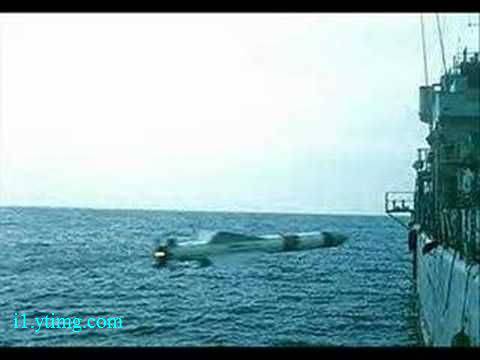 In the first part, we figured out that even not too thick armor, such as cruising, is fully capable of protecting the protected volume from being hit by a subsonic anti-ship missile - which missiles are now in the majority in the world.
In the first part, we figured out that even not too thick armor, such as cruising, is fully capable of protecting the protected volume from being hit by a subsonic anti-ship missile - which missiles are now in the majority in the world. The second part is that the armor does not allow the missile weapons from the ships, from which it could help, and the associated electronics. With the clarification that electronics is connected not only with weapons, but also in general with the functioning of the ship as a craft and as a combat unit.
Now - the last aspect: is it necessary, armor, today's ship.
Basis of consideration - and what, actually, armor protects?
Armor protects a floating unit. The unit drowned in that water is not needed by anyone. The unit, not drowned, but ceased to be a combat, is also not needed by anyone.
Well, that is, maybe, then it will come in handy - to repair, there, or disassemble the metal. But the designer, when developing a ship and putting armor on it, wants to preserve not only and not so much vitality, but - combat survivability.
And look. An example is on favorite material, on Tsushima.
Head Japanese “Mikasa” received more than 40 hits, from the bottom of 10 - the main, 12-inch caliber and 22 - auxiliary, 6-inch.
The main belt was not broken - though, I don’t know whether there were any hits in it. The battleship took a lot of water, but all this amount came into the holes of the upper, 6-inch belt. Be that as it may, with the unbeaten main belt, Mikasa remained a floating unit.
The armor was less thick on it, and it made its way repeatedly, but this whole heap of shells was able to disable only one 6-inch gun. That is, "Mikasa" was preserved as a combat unit. There was a gap of one 12-inch gun from his own projectile, which exploded in the barrel, but we do not consider this.
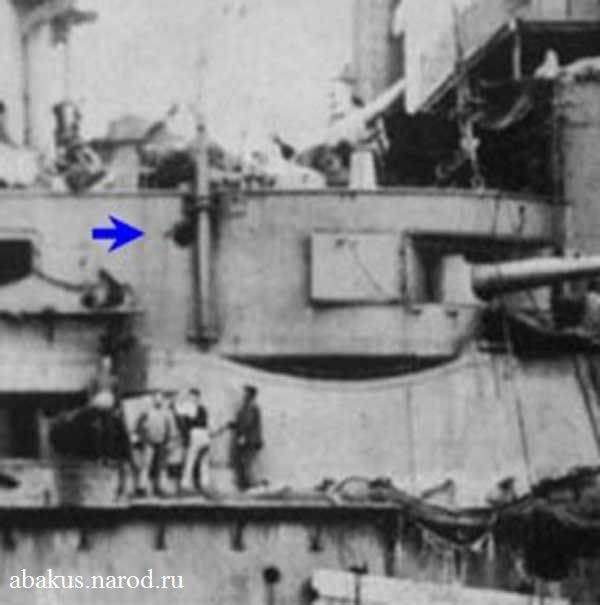
Russian ships turned over and sank - for example, Oslyabya, Borodino. But - again, not from breaking through the main belt. “Oslabyu” was summed up by a weak attachment of armor plates in the bow: when they hit, they didn’t break through, but they were pressed into the board, destroying the structure, and when they were hit again, they broke down, and then a hole was formed so ...
Borodino received a fatal hit - in the cellar of the 6-inch tower - obviously, through the deck, because the cellar is below the waterline. The cellar exploded, the ship quickly sank.
An important circumstance explaining why our battleships sank with an impassable belt: they were very heavily overloaded, first during construction, and therefore as a result of the adoption of excess coal reserves for long-distance transport. Therefore, they had the upper edge of the main belt located prohibitively close to the surface of the water, which willingly entered the compartments through the holes that came over the belt.
They will say to me: by the end of his life’s journey, “Prince Suvorov” had lost almost all artillery, while remaining afloat. But four Japanese battleships fired at Suvorov! The number of hits of 12- and 6-inch projectiles is estimated to be about 100! You know, citizens, if you dig and peck, then you can also make a hole with a concrete wall, think of Count Montecristo. Yes, and suffered "Suvorov" most of all from fires in unarmored superstructures, which spread and caused various internal explosions.
By the way, this will be a confirmation of what I am going to say below.
Okay, stop being distracted. I would like to say with the example of “Mikasy” that adequate booking could save the ship of the classical artillery era both as a floating unit and as a combat one.
***
Another important aspect is fire control. Even the most important, in the reasoning of what I want to substantiate.
By Tsushima on the ships were already large rangefinders and technical means for centralized control of shooting. But, in general, they appeared relatively recently. A shoot the ships with guns were able for a long time; how were you aiming? It is clear as: individually.
And this possibility of individual aiming of artillery installations was always preserved, and in Tsushima, and further, until today.
For example, look at the section of the tower of the armored cruiser Bayan:
See the tube on top of the trunk, looking into the embrasure? This is a sight, with the large cannons of the Kane system - and these are the Kanet 203-mm cannons - there were two sights, to the right and left of the axial plane of the cannon.
The same unfortunate Suvorov, in which literally 10 minutes after the start of the shooting, the negotiation pipes, signal halyards, and firing devices in the conning tower were broken, so that the command simply did not have the ability to control the shooting; "Suvorov", however, shot to the very tragic end.
Private summary №1.
Armor on the ships of the artillery era has justified itself as a means of preserving the SMOKING AND SAFETY of the ship. Because of it, and did not refuse to the very end of this era.
***
Do you understand what I want to say?
But what to say, you look. This is what the kamikaze did with the American destroyer Hazlewood:
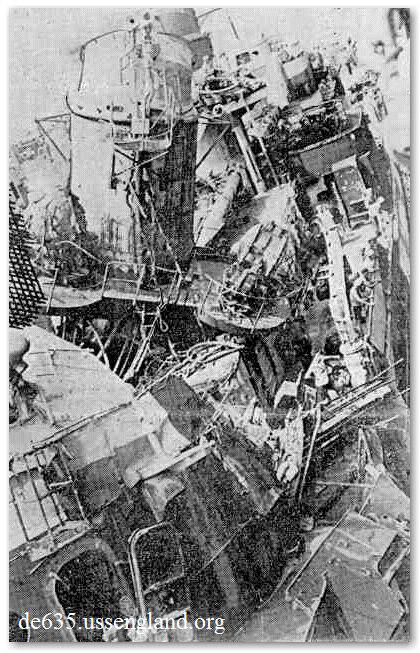
No shisha left a whole on the deck. Although the ship, as you can see, is afloat. And maybe something ahead remains. “Hezzlvud” is a type of “Fletcher” (it was mentioned in the previous post of this topic, there is a photo), he has on his nose two single-deck 127-mm installations. Perhaps these installations even retained combat capability.
We remember that we agreed to assume that a kamikaze with a bomb suspended by 500-kg is a good analogue (not to say, a prototype; it is somehow cynical ...) of a subsonic anti-ship missile.
So I put one under the other two wonderful (for the purposes of this article) photo. At the top - the famous English destroyer "Sheffield" with its famous hole in the board from the famous anti-ship missile "Exochet", obtained in the famous Falklands War. And on the bottom - the little-known American destroyer “Sterret” (or “Sterret”?) With a little-known hole in the board from an unknown kamikaze, received in a battle unknown to me.
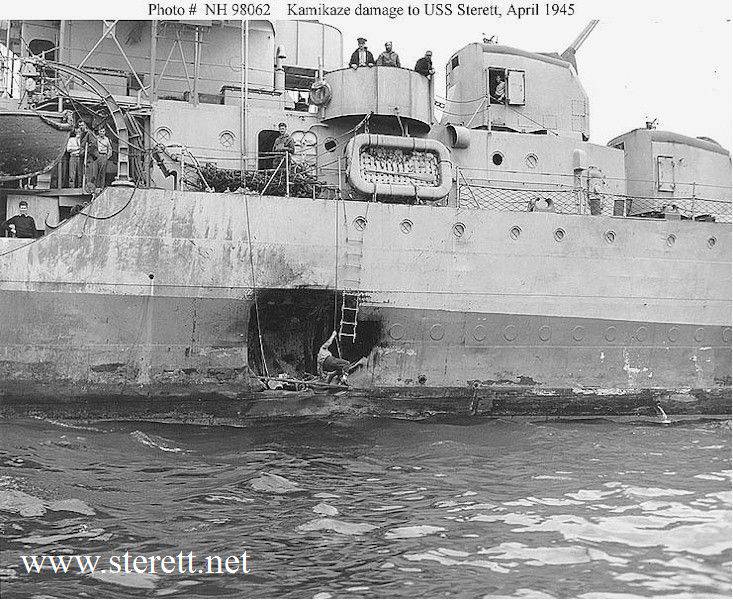
It looks like, huh?
Returning to the deck of the unfortunate "Hazlewood." We understand that on a modern ship such an explosion would have destroyed all or almost all of the antenna posts. And there would be nothing:
- manage anti-ship missiles;
- control anti-aircraft missiles;
- to give target designation to small-caliber rapid-fire anti-aircraft artillery complexes such as, for example, Vulcan Falans, that is, those who defend the ship from enemy missiles. And this ZAK itself would be demolished, because it is installed as high as possible above the deck;
- to give target designation of the nasal artillery mount, even if it remained intact.
And there would be nothing to extract information for their combat information and control system, and there would be nothing to communicate with the interacting forces ... In short, the ship as a combat unit comes to an end.
And all this will happen to him, even if his waterline is protected by armor, invulnerable to PKRs. And the antenna posts cannot be protected by armor; by definition, it is shielded. It is impossible even to protect with it the structures on which these posts are installed - it will be such an “upper weight” that the ship will turn over even before launching into the water.
Actually, this is a private summary number 2.
Even if there were reserves of weight for the installation of armor on the waterline of modern destroyers, frigates and corvettes, this, giving the chances of preserving the FLOW, would not provide even a ghostly hope of preserving BOE. That, given the transience of modern electronic-missile combat, is completely unacceptable.
We don’t need such hockey ...
***
And one more note.
In the discussion on this topic on the old blog there was, among others, the opinion that it was the introduction of rocket weapons that led to the abandonment of armor on ships.
I disagree with that.
Where was the armor in the middle of the twentieth century?
On the destroyers, the displacement of which already sometimes went beyond the figure of 3000 tons, it was not. On smaller ships - especially, except for special "kids" such as armored boats. On sea ships, the installation of armor began with the class of cruisers, and the classic cruiser of the mid-twentieth century - these are at least 8000 tons of displacement.
Of course, the armor was on the battleships. Moreover, new and relatively new battleships - in fact, all those that were built "from scratch" in the interwar period, were already counting on confronting not only projectiles, but also bombs. That is, they had not relatively thin armor decks, which should cause the ricochet of a projectile to pierce a thin armored or unarmored board, but decks that are thick enough to withstand a heavy bomb dropped from a great height — I wrote about this in the first part.
On the last American battleships - the type "Iowa" - the total thickness of the decks, and several decks were reserved, reached 216 mm.
As we have already found out, a subsonic cruise missile with the most common types of warhead will not penetrate such armor. If PCRs appeared at the time when the “Iowa” went out into the ocean, it would instantly be revealed that the armor serves against them no worse than they do against bombs and kamikazes.
Carriers also booked. The last ships of this class, which had time to go on the water at the very end of the war - the type “Midway” - had three armored decks, the total thickness of which reached 187 mm. By the way, to have an idea: the armor of only the upper flight deck (87 mm) weighed ... 3650 tons!
They even had a belt, and more abruptly than heavy cruisers: 193 mm.
That is, armor flourished on heavy ships, and it would not have been removed, and it was not removed — neither when the artillery cruisers were converted into missile cruisers (with missiles), nor was the withdrawal of American battleships from 1980's from conservation. However, I already wrote about this.
However, on newly built ships, with a rare and ineffective exception, no armor was placed. By a low-impact exception, I mean, for example, English cruisers of the “Tiger” type, the first of which was commissioned in the 1959 year. They had armor of maximum thickness 89 mm (3,5 inches); but they were laid back in 1942 year! In 1946, construction was frozen, then it was defrosted - they wanted to make missile of them, but they could not make rockets. And they entered service as pure artillery ships, but then it was already strange, and soon they were converted into cruiser-helicopter carriers, and still their age was short.
Also to exceptions, I include our rather big series of domestic post-war artillery cruisers; but our business, as already mentioned, is a special article ... And, by the way, they were no longer built in the middle of the 1950's, making a little more than half the planned amount.
So, on more than the overwhelming number of ships built in 1950's, no armor was placed.
But not because they were frightened by anti-ship missiles, about which at that time in the West only a small number of specialized specialists had heard.
This is what they were afraid of:
Here is what:
I may be mistaken, but it seems to me that in this picture, at the right cut of the post, there is a Japanese battleship. Only they had such peculiar tower-like superstructures.
But, in general, all the same. Battleship, be it at least Japanese, at least some - it's about 200 meters of length ...
After the accumulation of a certain number of atomic bombs on the planet, the domination of a strategy of massive retaliation was established, which did not imply any other war between the main opponents except the general nuclear one. The strategy of flexible response, which replaced it at the beginning of 1960-s in the context of atomic weapons, differed only in that a different “level” of atomic war was allowed.
Nobody doubted that the war “between the main ones” would be atomic.
As in the fact that the anti-ship weapon will become atomic. And it has become, and we, and they. What is the Lulu depth bomb (USA) with the equivalent of 11 kilotons - not much less than Hiroshima ... But it was equipped with anti-ship missiles of the ASROK complex with a range of only 14 km!
However, the same warhead was used in the Astor torpedo and in the Hotkop Mk-105 aerial bomb ... Well, and ours, with our relative weakness on the seas, in general, God himself commanded. To fly as part of a link of some Tu-16K-16, fly through all obstacles with at least one plane to the aircraft carrier connection and then launch a pair of missiles with a conventional warhead ?! Well, it is unlikely ... And we had nuclear torpedoes - the famous T-5; I'm not talking about bombs.
In general, in the 1950s, everyone was sure that the war at sea would also be atomic. And so they decided - the time of large ships has passed. I already wrote about this in this series. The combat potential must be dispersed among as many carriers as possible of the smallest displacement — in order to limit one-time damage from an enemy nuclear strike.
***
Everything, arguing is completed. It is clear that no armor will save from kilotons. It is clear that it is necessary to build relatively small ships, in which the displacement will have a much more practical use than spending it on completely useless armor. It is clear that the only thing that can be done is to try to destroy the carrier of atomic weapons, for which early detection and sufficiently long-range guided missiles are possible. That is powerful electronics.
After a period of “defusing international tensions” of the mid-1970s, despite the rather return of this very intensity, the atomic strain began to subside. It became clear that collisions with the use of "conventional" weapons are possible even between major rivals ... but it was too late.
It was too late to return the armor. Electronics in all its forms became absolutely necessary for the combat, and non-combat activities of any ship. She supplanted the armor due to the occupation of those scales that could be occupied by armor. And the cost of "electronic" ships has grown so much that the displacement limit has also got a financial justification - large ships need to be built only for those that cannot be small.
But this is a looping. This has already happened.
For complete looping - here you are once again the unfortunate Sheffield.
Only a rocket, unlike the very first photo, has already flown to it ...
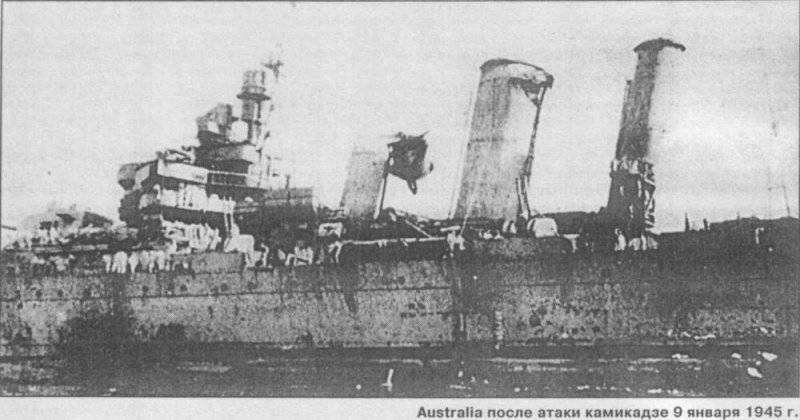
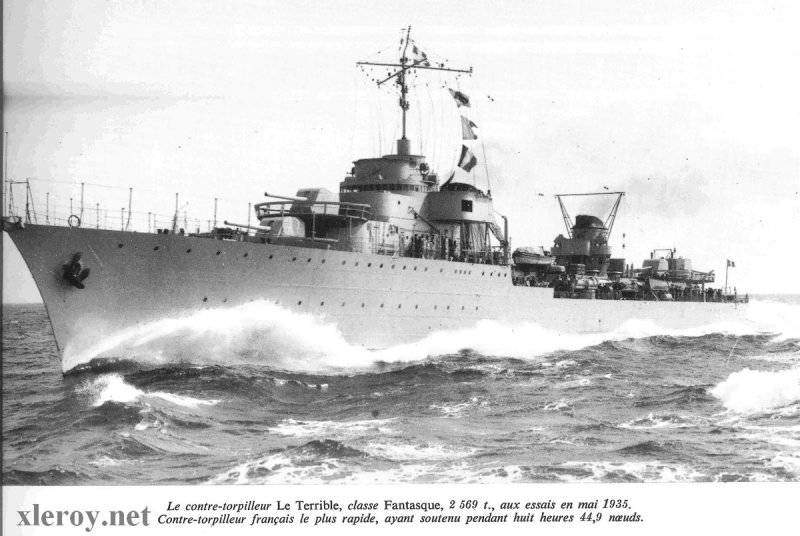
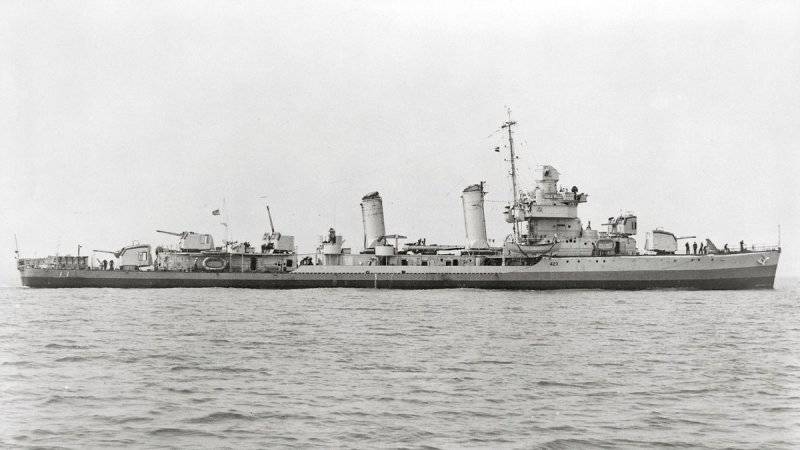
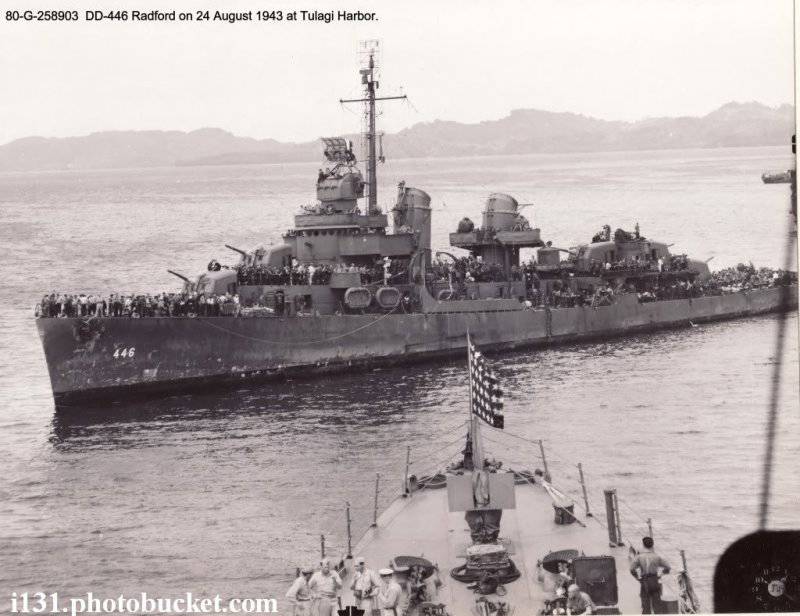
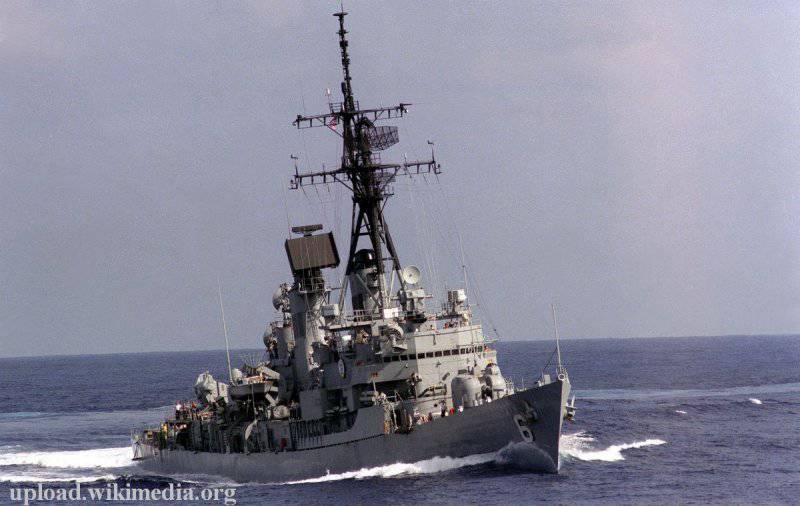
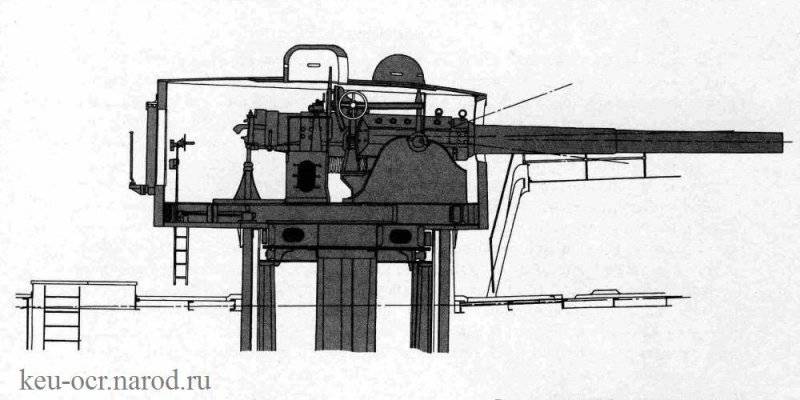
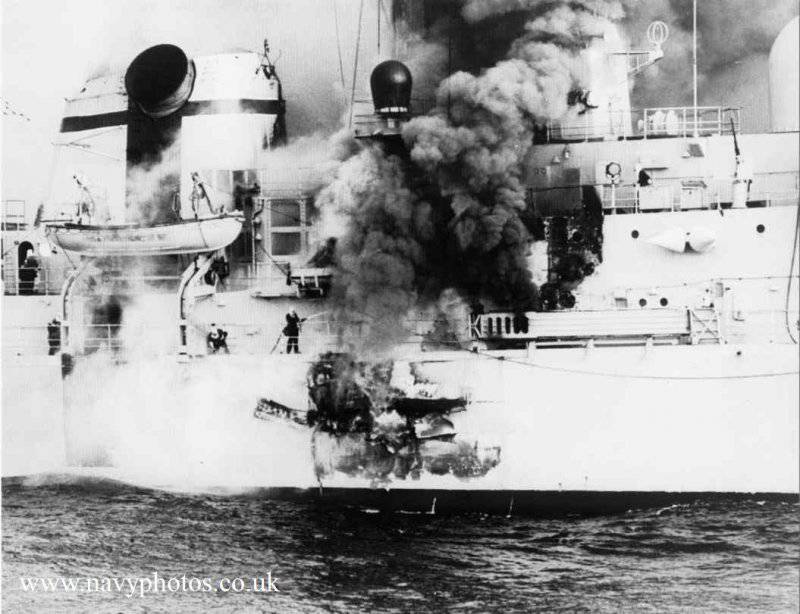
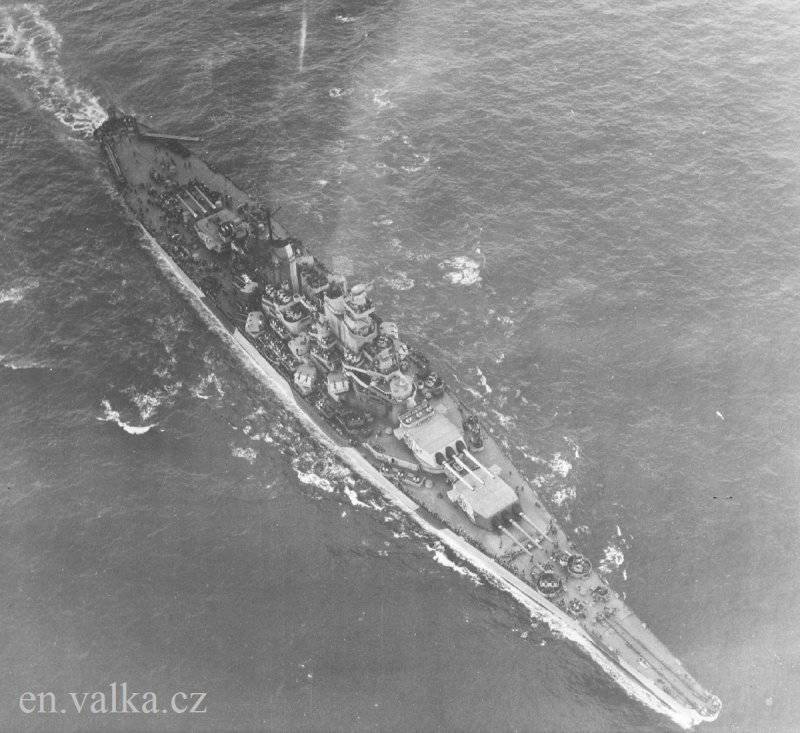

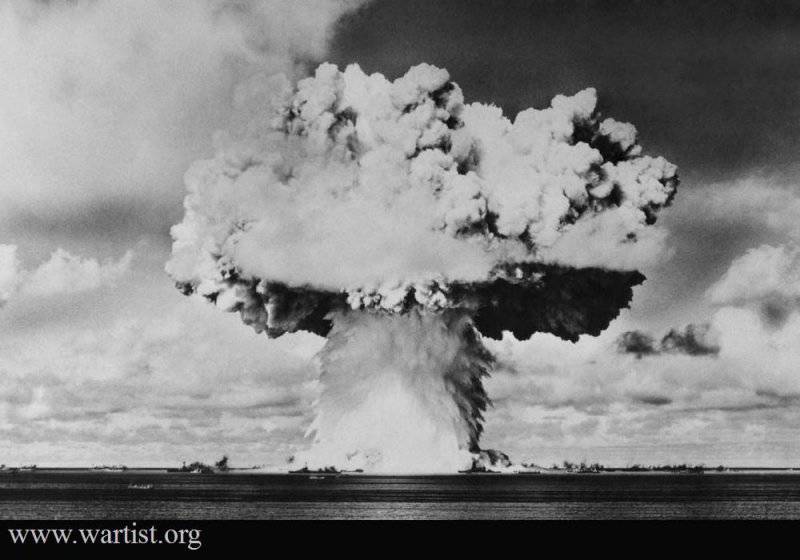
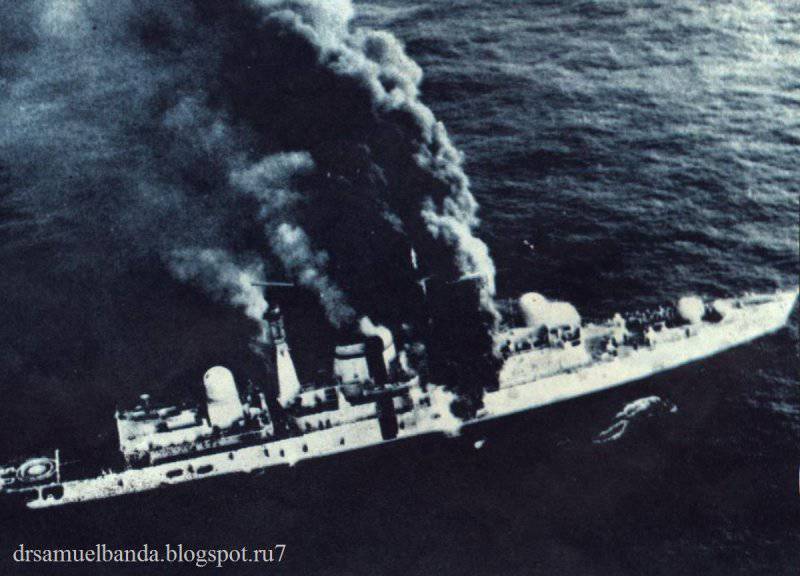
Information